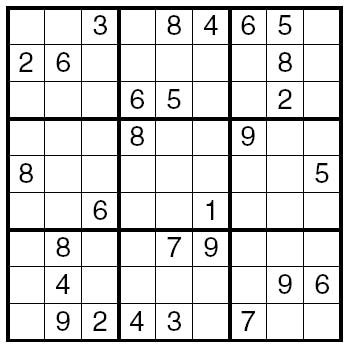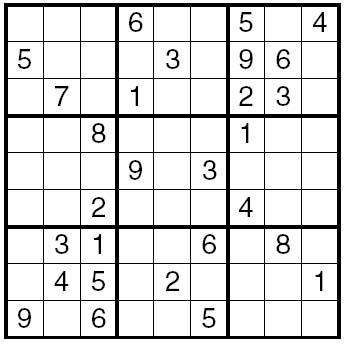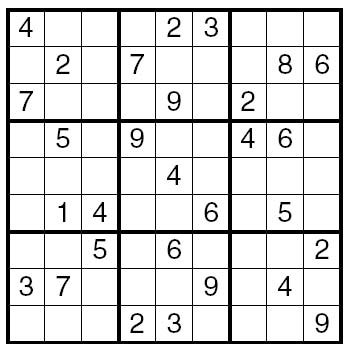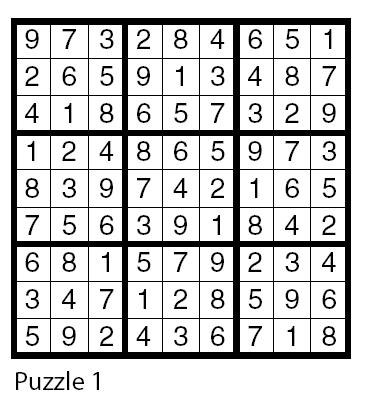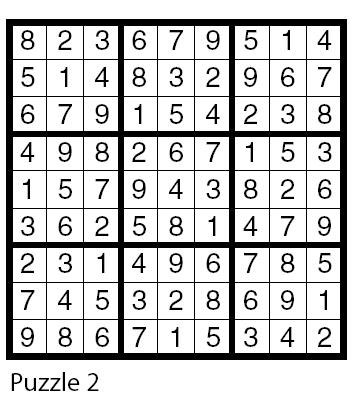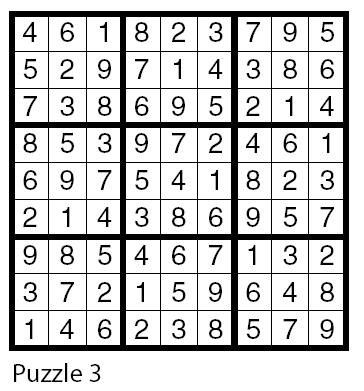
|
|
Sudoku Puzzles Sudoku is a logic game made up of a square divided into 81 smaller squares. These squares are grouped in nine 3x3 squares. The object of the game is to put down the numbers 1-9 so that each number appears only once in every row, column, and 3x3 square, in keeping with the numbers already placed. Although numbers are used, it is stressed that numbers are not necessary, they could just as well be colors, shapes, letters, or any other symbol. Sudoku is really a type of Latin square, named by the famous mathematician Leonhard Euler. (There is something called a Euler square which is formed with n objects of two types so that both form Latin squares). A Latin square is a n*n matrix where the numbers 1-n are put in each row and column. In sudoku, these conditions must be met as well as the numbers appearing once in each sub-grid. When sudoku started is not exactly clear. The first puzzle appeared in Dell Pencil Puzzles and Word Games in 1979. According to Will Shortz, puzzlemaster for the New York Times, the creator was an architect named Howard Garns. According to the Social Security Death Index, he died Oct 6, 1989. Little is known about him. The puzzle was originally called "Number Place". In 1984 it started to run in a Japanese magazine. Originally it was called nanpure, but eventually became known as Sudoku, which means, literally, "single number." (The magazine copyrighted the name, which is why in Japan it is usually called nanpure or "Number Place". Only in places outside of Japan is it called sudoku). In 1997, a retired judge named Wayne Gould visited Japan and came across the puzzle. He wrote a computer program that would generate the puzzles and proposed the Times use it. In 2004, the Times accepted the proposal. A little later, the Daily Telegraph started to run them as well. They were popular almost immediately, and many other newspapers followed suit. There have since been numerous books about sudoku, how to win sudoku, and even mathematicians trying to find properties of sudoku, such as what the minimum amount of pre-placed numbers is to ensure a unique puzzle (so far it is believed to be 17). Because of their immense popularity, sudoku has been called, "the Rubik's cube of the 21st century. Here are some puzzles for you to try. The answers are at the bottom of the page.
Answers:
More resources? Click here for a library of new ideas! FAQs/Contact Us/Motivational & Inspirational Quotes/Useful Sites |
